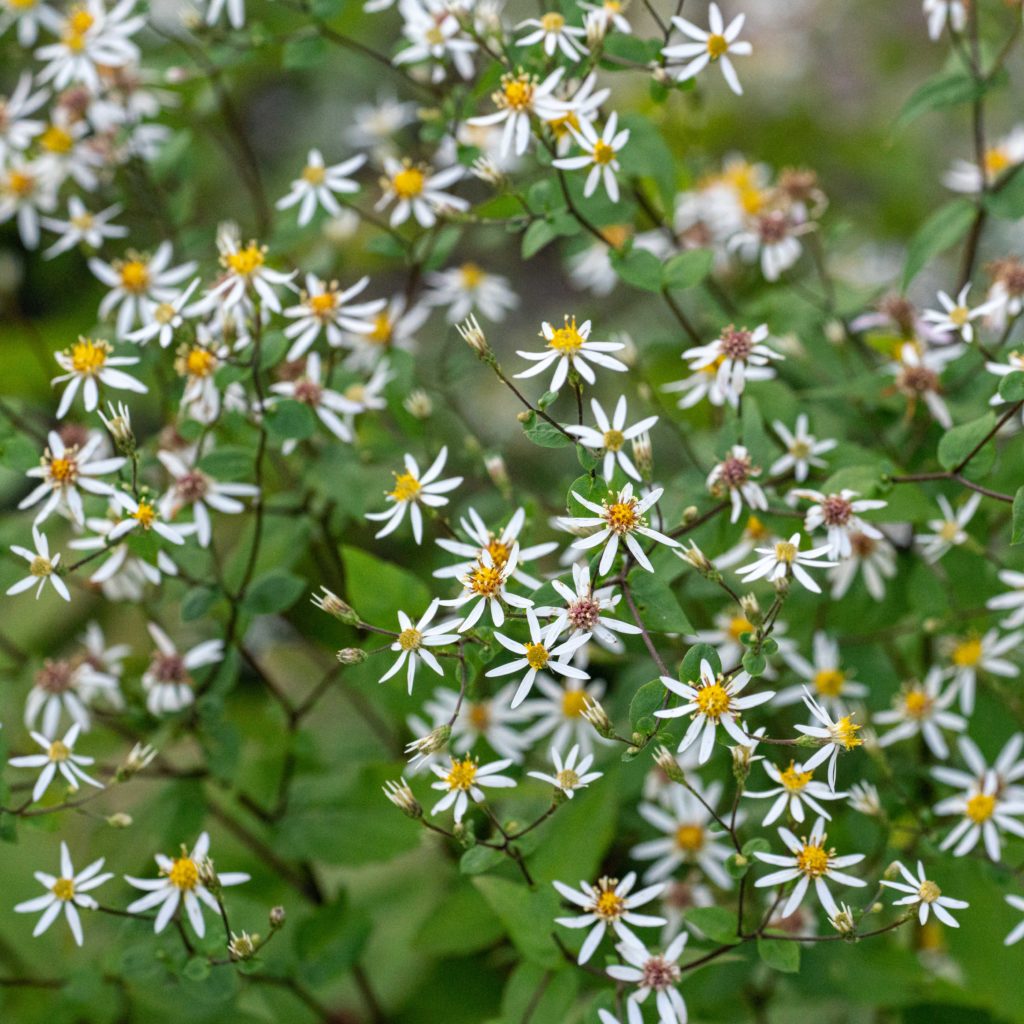Eryngium yuccifolium – Rattlesnake Master
Fascinating globular, bristly whitish blooms. Yucca-like leaves have a deep-green coloration. Due to it’s taproot this species is drought tolerant once established.
Height : 3-5 feet (90-150 cm)
Blooming Period : June to August
Light : Full Sun
Water : Dry to Medium
Soil : Sand, Loam, Clay
Zone : 3-8
Native Ontario Habitat : Prairies, dry meadows, plains
Landscape Uses : Butterfly gardens, pollinator gardens, prairies, rock gardens, naturalization

Penstemon digitalis – Foxglove Beardtongue
A well-rounded perennial that is quite happy adapt to different garden conditions. It prefers medium to dry soil in full to partial sun. The tubular flowers attract the pollinators! Along with the pollinators hummingbirds and butterflies will often make an appearance.
Height : 3-4 feet (90-120cm) Spread : 1-2 feet (30-60 cm)
Blooming Period : June to July
Light : Full to Partial Sun
Water : Dry to medium
Soil : Sand, loam, clay
Zone : 4-8
Native Ontario Habitat : Prairies, open woodlands and savannahs
Landscape Uses : Butterfly gardens, pollinator gardens, meadows and naturalized areas
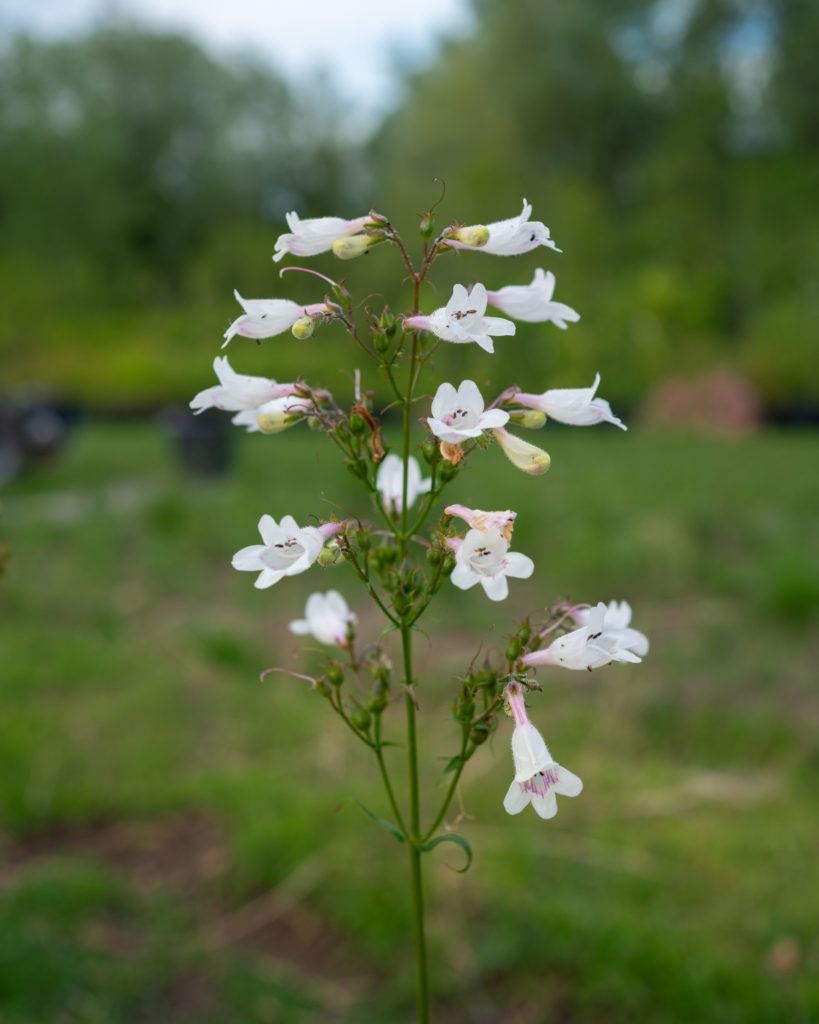
Monarda punctata – Dotted Mint
The dotted mint is a unique perennial native to Ontario. The “flowers” it displays are actually leaf bracts that surround the true flower. The dotted mint prefers sandy, dry soil. This is a highly functional plant for pollinators and hummingbirds. It is known for being a favorite food source for the endangered Karner Blue Butterfly. A short-lived species that acts as a biennial in some conditions and a perennial in favorable growing conditions.
Height : 1-2 feet (30-60cm) Spread : 0.5-1 feet (15-30 cm)
Blooming Period : June to August
Light : Full to Partial Sun
Water : Dry to medium
Soil : Sand, loam
Zone : 3-8
Native Ontario Habitat : Dry prairies and sandy sites
Landscape Uses : Butterfly gardens, pollinator gardens, meadows and naturalized areas
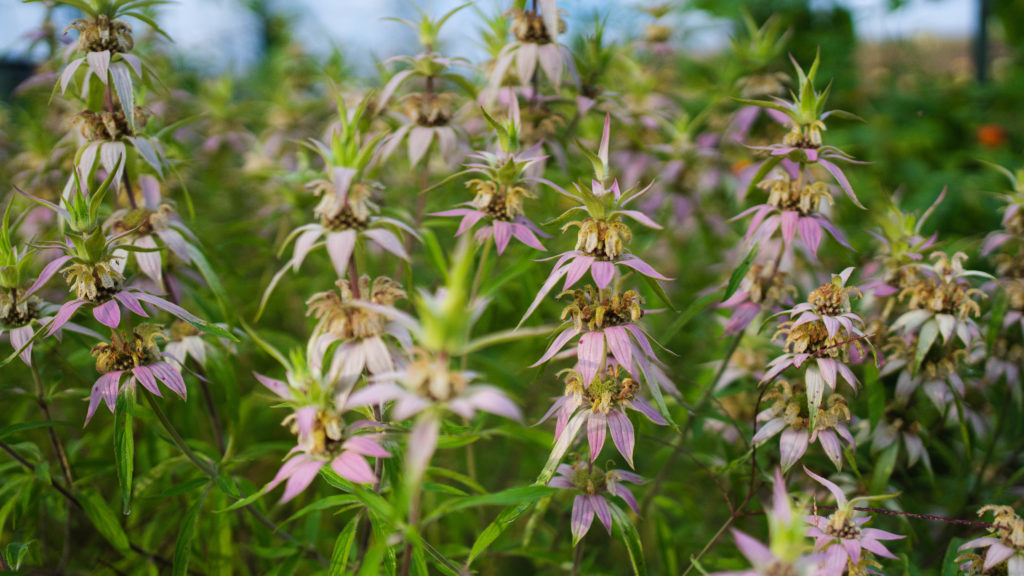
Symphyotrichum oolentangiense – Sky Blue Aster
A favorite perennial around here! Displays an abundance of bluish-purple blooms in the fall. Has a slender architecture and fits nicely in the garden intermingled with other perennials to give an extra splash of color late in the year. Attractive to pollinators.
Height : 2-3 feet (60-90cm) Spread : 1-2 feet (30-60 cm)
Blooming Period : August to October
Light : Full to Partial Sun
Water : Dry to medium
Soil : Sand, loam, clay
Zone : 3-8
Native Ontario Habitat : Prairies, meadows, slopes
Landscape Uses : Butterfly gardens, pollinator gardens, meadows and naturalized areas
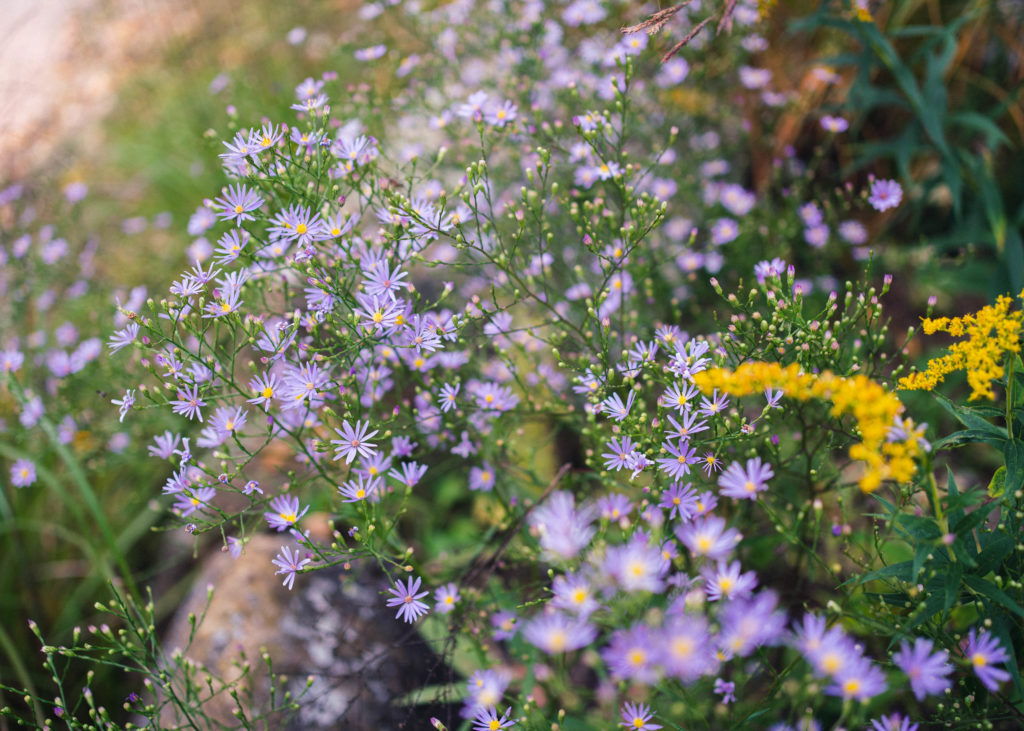
Echinacea pallida – Pale Purple Coneflower
The pale coneflower has petals that are a gentle, pale pinkish-purple which are, generally, narrower than its relative the purple coneflower (echinacea purpurea). The iconic coneflower form is welcome addition to any garden style. A long-lived, hardy perennial once established. Attracts pollinators including butterflies.
Height : 2-3 feet (60-90cm) Spread : 1-2 feet (30-60 cm)
Blooming Period : June to July
Light : Full to Partial Sun
Water : Dry to medium
Soil : Sand, loam, clay
Zone : 4-8
Native Ontario Habitat : Prairies, open woodlands and savannahs
Landscape Uses : Butterfly gardens, pollinator gardens, meadows and naturalized areas
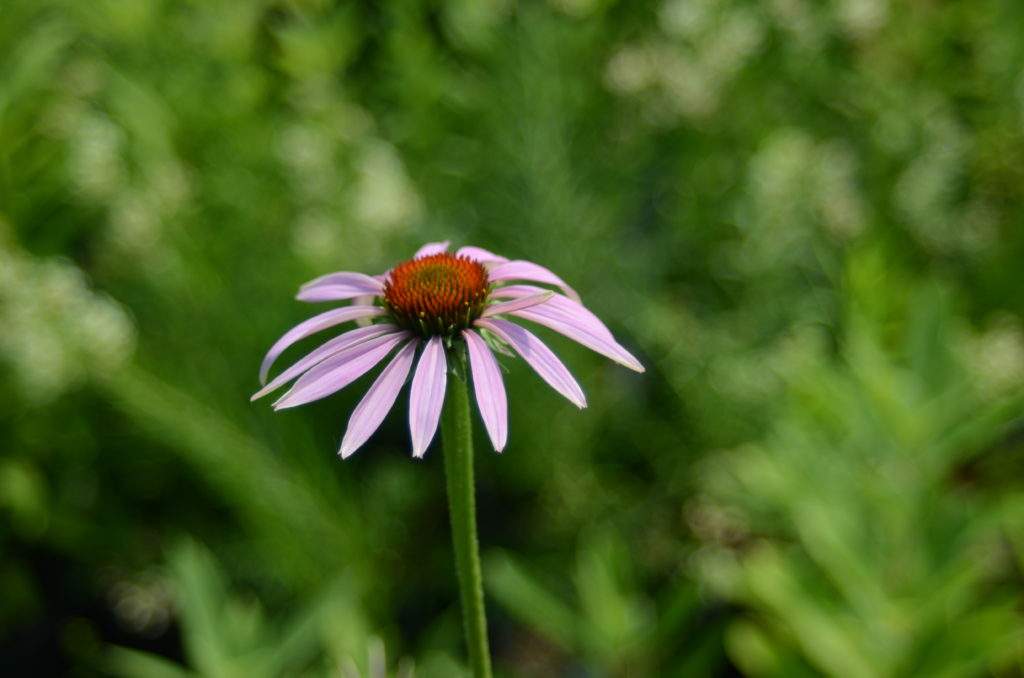
Bonus
Eurybia divaricata – White Wood Aster
An aster species for shady areas. Clean white blooms appear in late summer. Can handle shallow rocky soil.
Height : 1-2 feet (30-60 cm)
Blooming Period : August to September
Light : Partial to Full Shade
Water : Dry to Medium
Soil : Sand, Loam, Clay
Zone : 3-8
Native Ontario Habitat : Woodlands
Landscape Uses : Shade gardens, woodland areas, cottage gardens
